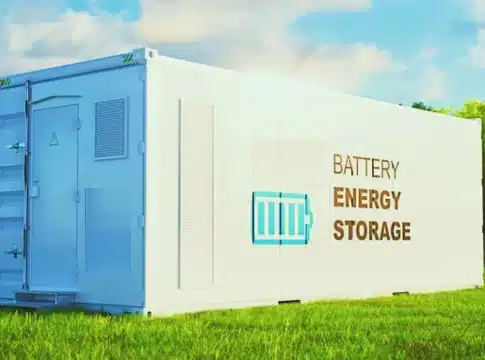Flying High: How Does Taylor Swift’s Eras Tour Impact the Environment?
Taylor Swift’s global stardom is undeniable, captivating millions of fans worldwide with her music and performances. However, behind the glitz and glamour of her Eras Tour lies a less glamorous reality: the environmental impact of her frequent air travel, particularly her flights’ carbon emissions.
Swift’s Eras Tour takes her to various destinations globally, requiring extensive air travel for herself, her crew, and equipment. This constant jet-setting contributes significantly to carbon emissions, intensifying climate change and environmental degradation.
Flying High: The Environmental Toll of Celebrity Air Travel
The aviation industry is a major emitter of greenhouse gases, particularly carbon dioxide (CO2), which is released during the burning of jet fuel. It’s one of the fastest-growing sources of CO2 emission, responsible for about 2% of the global carbon emissions. Airlines emit over 900 million tonnes of CO2 annually.
According to the International Council on Clean Transportation, a round-trip flight from New York to London emits around 1.6 metric tons of CO2 per passenger. But that emission is based on data from commercial flights, which have a much lower footprint than private jet flights.
Private jets stand out as the most environmentally harmful travel option. According to Transport & Environment, an individual flying on a private plane emits 10 to 20 times more CO2 than a passenger on a commercial airline.
Moreover, air travel’s impact extends beyond CO2 emissions. Aircraft emit other pollutants, such as nitrogen oxides, particulate matter, and water vapor, which all contribute to air pollution.
To address such environmental concerns and reduce harmful emissions, some airlines have made operational improvements and technological advancements. Examples are using low-carbon jet fuels and more energy-efficient aircraft components and technologies.
Still, the sheer volume of air travel associated with large-scale tours like Swift’s Eras Tour presents a significant environmental challenge.
Additionally, Swift’s tour involves transporting equipment, stage props, and merchandise across continents, further increasing carbon emissions through transportation logistics.
How Big is Swift’s February Tour Flight Carbon Footprint?
Focusing on the pop star’s frequent flying since her Eras Tour started in March last year, the emissions are sky-high. Let’s consider her previously completed February tour, consisting of 11 total shows in three different cities: Tokyo, Sydney, and Melbourne.
Carbon emissions data for specific flights can vary depending on factors such as route efficiency and passenger load. However, using figures based on estimated emissions data will provide a general idea of the CO2 footprint associated with Swift’s air travel between those cities.
From her home base in New York City to Tokyo, Japan, the estimated CO2 emission is around 48 metric tons (Mt) of CO2 per the Paramount Business Jets carbon footprint calculator. The company’s private jet carbon offset calculator is a tool that helps in calculating the CO2 emissions of trip using various private aircraft types and categories.
After her last show in Tokyo on February 10, Swift flew to Las Vegas to support her boyfriend Kansas City Chiefs Travis Kelce at the Super Bowl LVIII. That known flight made the singer emit 40 Mt of CO2.
READ MORE: Carbon Footprint Controversy For Taylor Swift Ahead of Super Bowl LVIII
Assuming that Swift went back to her Manhattan abode, her flight emitted another 17 Mt of CO2.
Then on February 16, Swift had flown to Melbourne, Australia to perform her 3-day Eras Tour show. Using the same calculator, flying on her jet to take that route emitted 147 Mt for a roundtrip back home.
Lastly, Swift went back to Australia on February 23, this time in the capital city to complete her February schedule. She performed for four days straight in Sydney until February 26. This part of Swift’s Eras Tour flight released 141 Mt of carbon emission, from New York to Sydney and back.
The Sky’s the Limit for Taylor Swift’s Eras Tour Carbon Emission
Overall, flying in her private jet to attend the 11 Eras Tour shows for February alone made Taylor Swift responsible for emitting a total of 393 Mt of CO2. Putting that into perspective, an average person in the U.S. emits around 16 tons or 14 metric tons yearly.
That’s how huge Swift’s air travel emissions are – 28x more than an average person emits in a year. That didn’t even include the emissions of the shows themselves and the fans who have traveled from various destinations, too.
Factor in the rest of her Eras Tour shows, starting from March 2023 until December 2024 and the figure explodes.
While Swift herself may not be solely responsible for the environmental impact of her tour, her high-profile status and influence could be harnessed to promote sustainability within the entertainment industry.
Artists like her could take some steps to mitigate their environmental footprint. These can be investing in renewable energy initiatives, advocating for eco-friendly touring practices, and implementing carbon offset programs. Swift’s spokesperson confirmed that she’s into carbon offsetting and has bought offsets to cover her tour travel.
READ MORE: Taylor Swift Turns to Carbon Offsets for Her Sky-High Footprint
In conclusion, while Taylor Swift’s Eras Tour undoubtedly entertains millions of fans worldwide, it also underscores the environmental costs associated with extensive air travel. As society increasingly grapples with the urgency of climate change, it becomes imperative for both artists and fans to consider the environmental consequences of large-scale tours and work towards more sustainable alternatives.
The post Flying High: How Does Taylor Swift’s Eras Tour Impact the Environment? appeared first on Carbon Credits.



